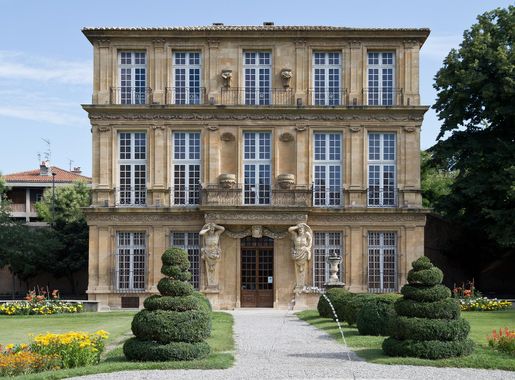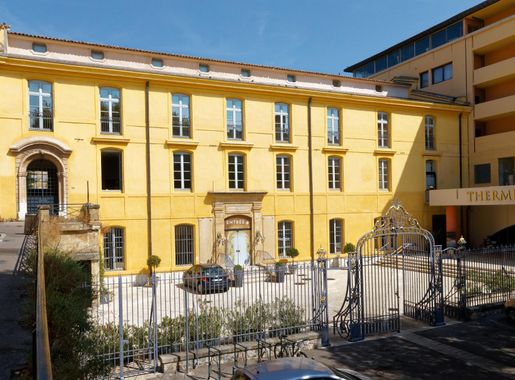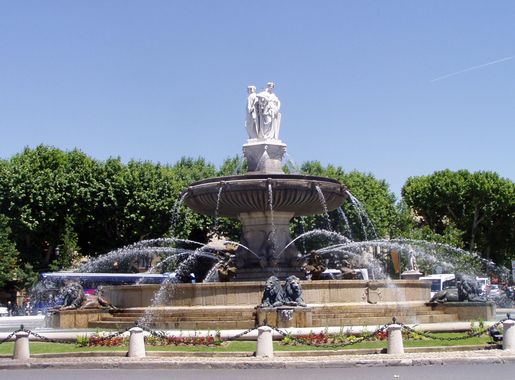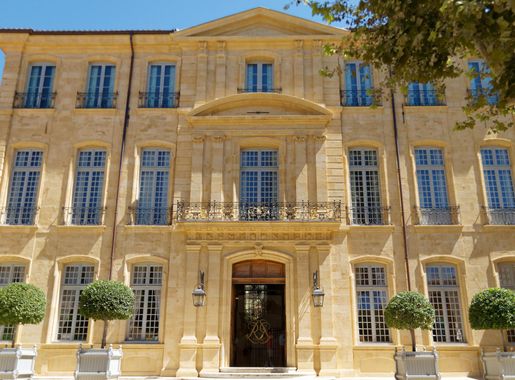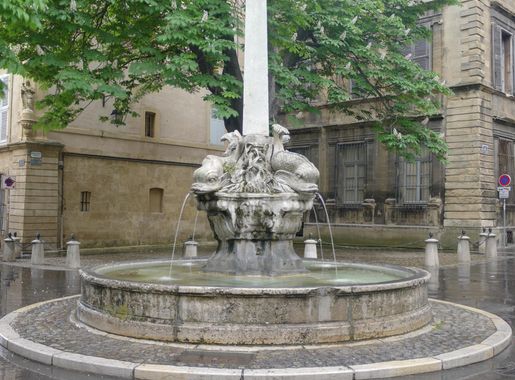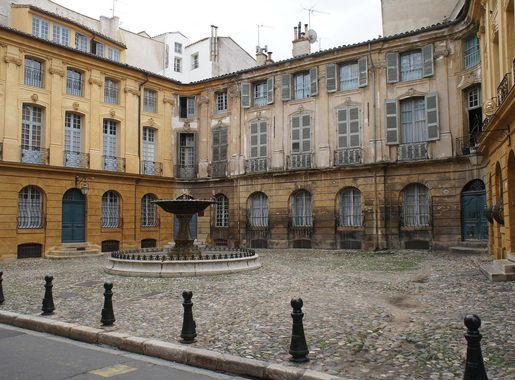
Discover the Charm of Quartier Sextius-Mirabeau in Aix-en-Provence
Explore Quartier Sextius-Mirabeau in Aix-en-Provence: a delightful blend of history, art, and modernity, offering a unique Provençal experience for every visitor.
Quartier Sextius-Mirabeau, nestled in the heart of Aix-en-Provence, is a delightful blend of history, art, and modernity. This vibrant neighborhood is named after the famous ancient Roman general Sextius and the influential French revolutionary Mirabeau. It offers a unique mix of cultural heritage and contemporary attractions, making it a must-visit destination for tourists seeking an authentic Provençal experience. Stroll down the elegant Cours Mirabeau, a tree-lined avenue filled with bustling cafes, boutiques, and historic buildings. Here, you can enjoy a leisurely coffee at one of the many outdoor terraces while soaking in the lively atmosphere. The area is also home to the stunning Fontaine de la Rotonde, a majestic fountain that serves as a central landmark and a perfect spot for photo opportunities. For art enthusiasts, the Quartier Sextius-Mirabeau does not disappoint. The Granet Museum, located nearby, houses an impressive collection of European paintings and sculptures, including works by Cézanne, who was born in Aix-en-Provence. Additionally, the Caumont Centre d'Art offers rotating exhibitions in a beautifully restored 18th-century mansion. History buffs will appreciate the neighborhood's rich past, with its Roman baths and ancient ruins. The Thermes Sextius, a luxurious spa built on the site of Roman thermal baths, provides a unique opportunity to relax and rejuvenate in a setting steeped in history. Quartier Sextius-Mirabeau also boasts a vibrant nightlife, with numerous bars, restaurants, and music venues offering a taste of local culture. Whether you're dining on traditional Provençal cuisine or enjoying a glass of local wine, the neighborhood's culinary scene is sure to delight. From its historic landmarks and cultural institutions to its lively streets and modern amenities, Quartier Sextius-Mirabeau is a captivating destination that promises an unforgettable experience for every visitor.
Local tips in Quartier Sextius-Mirabeau
- Visit early in the morning to enjoy a quieter Cours Mirabeau and capture beautiful photos without the crowds.
- Don't miss the local markets on Tuesdays, Thursdays, and Saturdays for fresh produce, antiques, and artisanal products.
- Wear comfortable shoes as the cobblestone streets can be uneven and walking is the best way to explore the neighborhood.
- Book tickets in advance for popular attractions like the Granet Museum to avoid long queues.
- Try the local specialty, Calissons d'Aix, a delicious almond-based candy, available in many shops throughout the area.
Discover the Charm of Quartier Sextius-Mirabeau in Aix-en-Provence
Quartier Sextius-Mirabeau, nestled in the heart of Aix-en-Provence, is a delightful blend of history, art, and modernity. This vibrant neighborhood is named after the famous ancient Roman general Sextius and the influential French revolutionary Mirabeau. It offers a unique mix of cultural heritage and contemporary attractions, making it a must-visit destination for tourists seeking an authentic Provençal experience. Stroll down the elegant Cours Mirabeau, a tree-lined avenue filled with bustling cafes, boutiques, and historic buildings. Here, you can enjoy a leisurely coffee at one of the many outdoor terraces while soaking in the lively atmosphere. The area is also home to the stunning Fontaine de la Rotonde, a majestic fountain that serves as a central landmark and a perfect spot for photo opportunities. For art enthusiasts, the Quartier Sextius-Mirabeau does not disappoint. The Granet Museum, located nearby, houses an impressive collection of European paintings and sculptures, including works by Cézanne, who was born in Aix-en-Provence. Additionally, the Caumont Centre d'Art offers rotating exhibitions in a beautifully restored 18th-century mansion. History buffs will appreciate the neighborhood's rich past, with its Roman baths and ancient ruins. The Thermes Sextius, a luxurious spa built on the site of Roman thermal baths, provides a unique opportunity to relax and rejuvenate in a setting steeped in history. Quartier Sextius-Mirabeau also boasts a vibrant nightlife, with numerous bars, restaurants, and music venues offering a taste of local culture. Whether you're dining on traditional Provençal cuisine or enjoying a glass of local wine, the neighborhood's culinary scene is sure to delight. From its historic landmarks and cultural institutions to its lively streets and modern amenities, Quartier Sextius-Mirabeau is a captivating destination that promises an unforgettable experience for every visitor.
Iconic landmarks you can’t miss
Fontaine de la Rotonde
Explore the iconic Fontaine de la Rotonde in Aix-en-Provence, a majestic fountain surrounded by vibrant culture and stunning architecture.
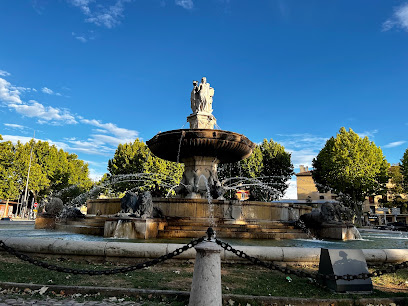
Place des Cardeurs
Explore the vibrant atmosphere of Place des Cardeurs in Aix-en-Provence, where history, culture, and local flavors blend seamlessly.
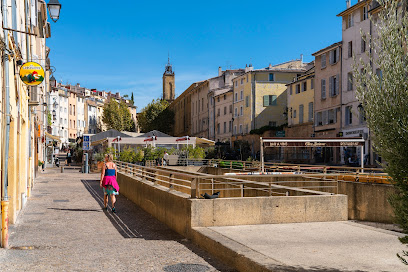
Paroisse Cathédrale Saint Sauveur Aix-en-Provence
Explore the stunning Paroisse Cathédrale Saint Sauveur in Aix-en-Provence, a beautiful blend of Romanesque and Gothic architecture rich in history and culture.

Place d'Albertas
Experience the charm of Place d'Albertas, a vibrant square in Aix-en-Provence, rich in history and bursting with local culture and delightful cuisine.
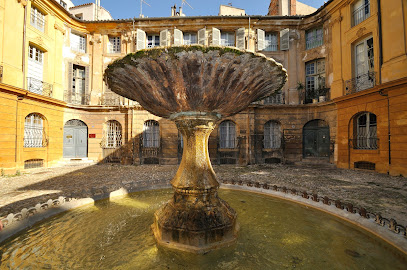
Place des Quatre-Dauphins
Explore the scenic Place des Quatre-Dauphins in Aix-en-Provence, where art, history, and vibrant culture come together in a stunning square.
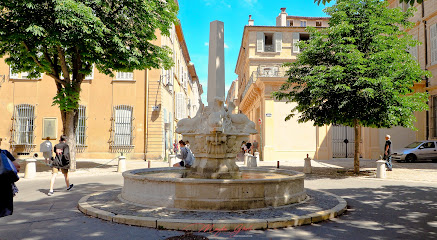
Immobilière Sextius Mirabeau - Groupe FIGUIERE
Explore stunning properties and local culture at Immobilière Sextius Mirabeau, your gateway to real estate in the heart of Aix-en-Provence.
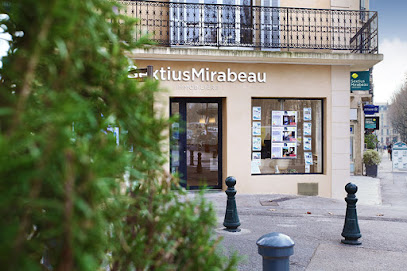
Fontaine Moussue
Discover the enchanting Fontaine Moussue in Aix-en-Provence, a historic landmark surrounded by vibrant culture and natural beauty.
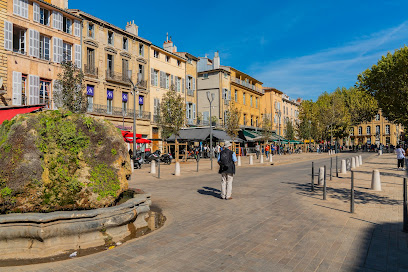
Fontaine des Neuf-Canons
Discover the beauty of Fontaine des Neuf-Canons in Aix-en-Provence, a stunning 18th-century fountain surrounded by vibrant culture and history.

Fontaine Des Augustins
Discover the charm of Fontaine Des Augustins in Aix-en-Provence, a historical fountain surrounded by vibrant streets and captivating local culture.
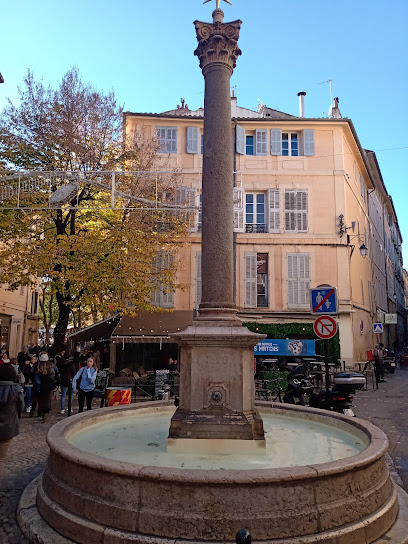
Rue des tanneurs
Discover the historical Rue des Tanneurs in Aix-en-Provence, where charming architecture meets rich cultural heritage in a picturesque setting.
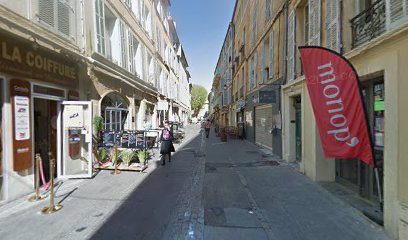
Unmissable attractions to see
Fontaine de la Rotonde
Experience the charm of Aix-en-Provence at the stunning Fontaine de la Rotonde, a historic fountain surrounded by vibrant streets and delightful cafes.
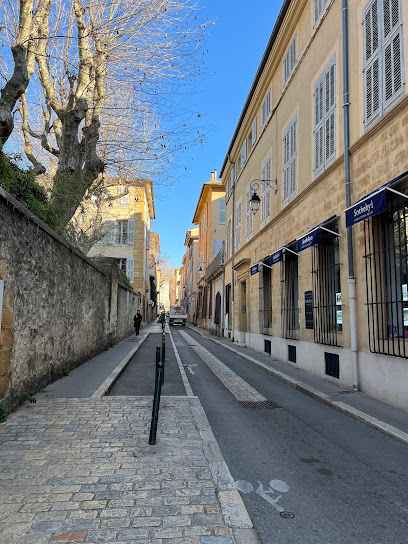
Hôtel de Caumont
Discover the charm of Hôtel de Caumont, a cultural and artistic gem in Aix-en-Provence, offering inspiring exhibitions in a historic setting.
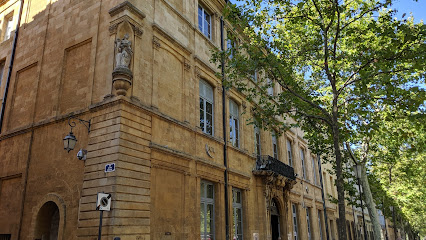
Place des Cardeurs
Experience the heart of Aix-en-Provence at Place des Cardeurs, a vibrant plaza filled with culture, shops, and delightful cafés.
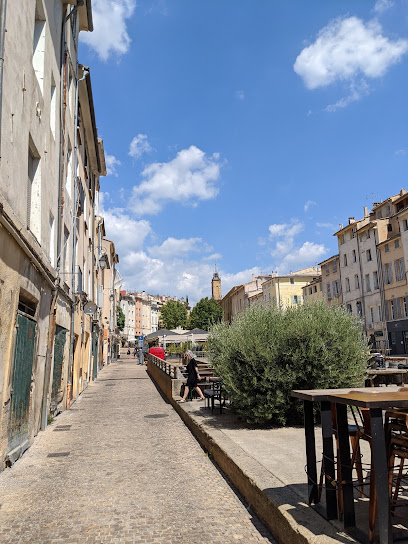
Place des Quatre-Dauphins
Explore the historic charm of Place des Quatre-Dauphins, a vibrant square in Aix-en-Provence featuring stunning architecture and a lively atmosphere.
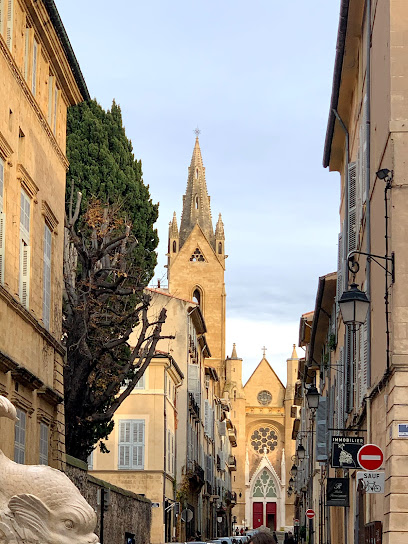
Fontaine Du Roi René
Experience the historical allure of Fontaine du Roi René, a stunning symbol in the heart of Aix-en-Provence, where culture and beauty converge.

Fontaine Moussue
Explore the stunning Fontaine Moussue in Aix-en-Provence, a historical fountain surrounded by art, culture, and vibrant local life.
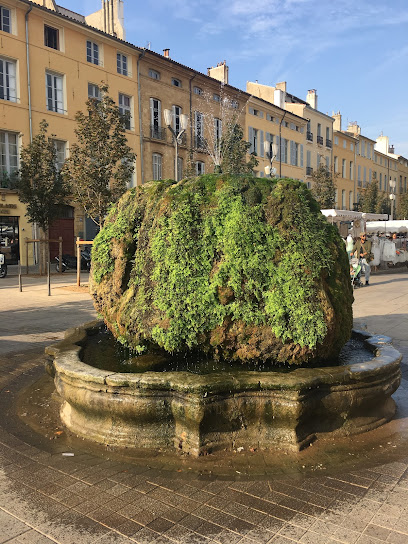
Fontaine des Neuf-Canons
Explore the enchanting Fontaine des Neuf-Canons in Aix-en-Provence, a historical fountain surrounded by vibrant local culture and stunning architecture.
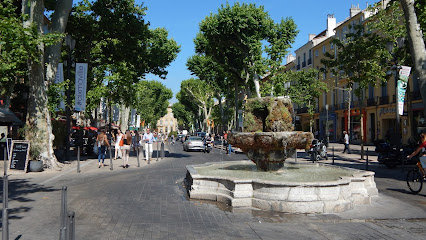
Fontaine Pascal
Experience the serene beauty of Fontaine Pascal in Aix-en-Provence, a historic fountain surrounded by vibrant streets and rich culture.
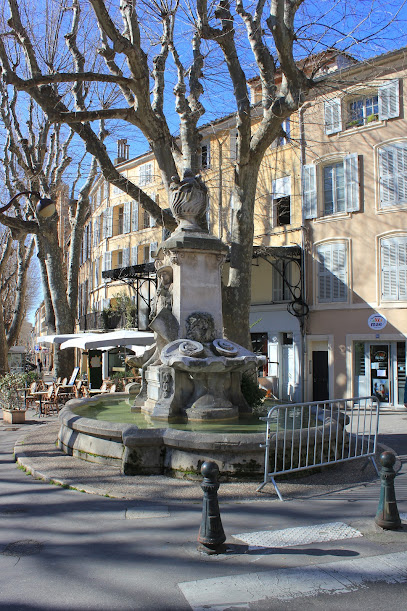
La Quartier du Palais
Explore La Quartier du Palais in Aix-en-Provence, where history, architecture, and vibrant local culture come together in a stunning French setting.

Essential places to dine
Bar Le Grillon
Discover Bar Le Grillon: A lively brasserie in Aix-en-Provence serving delightful French cuisine with a touch of Italian flair.
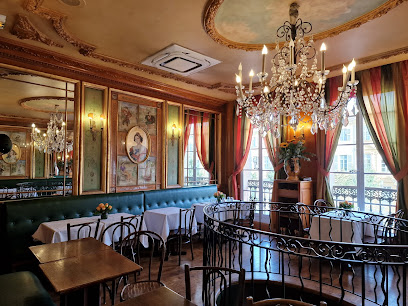
La Belle Epoque
Savor exquisite French cuisine at La Belle Epoque - a vibrant restaurant and brewery in Aix-en-Provence offering delightful dining experiences.

Le bouche à Oreille
Experience authentic French cuisine at Le Bouche à Oreille in Aix-en-Provence – where tradition meets taste in every delightful dish.
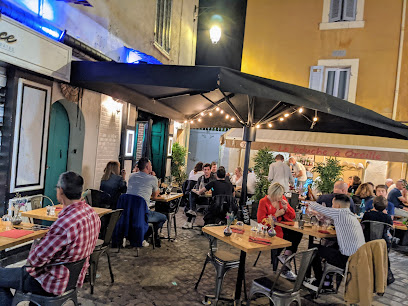
La Bouchée
Discover La Bouchée: A top-rated French restaurant in Aix-en-Provence offering authentic Mediterranean flavors and a delightful dining atmosphere.
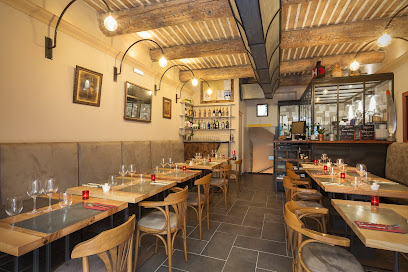
MITCH
Experience exquisite haute French and Mediterranean cuisine at MITCH in Aix-en-Provence - a culinary delight not to be missed.
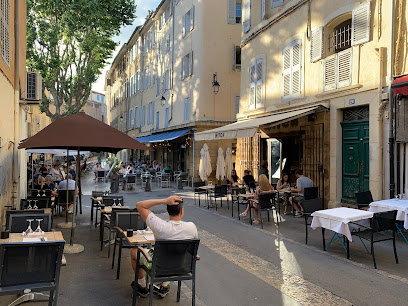
Jardin Mazarin
Experience exquisite haute French cuisine in Aix-en-Provence at Jardin Mazarin – where culinary artistry meets Mediterranean flair.
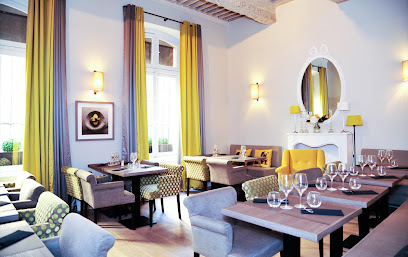
L'Estello
Experience the essence of Provence at L'Estello - where tradition meets contemporary dining in the heart of Aix-en-Provence.
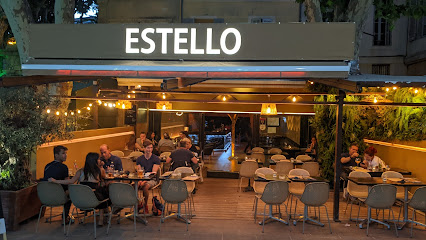
Café de Paris - Aix-en-Provence
Experience authentic French cuisine at Café de Paris in Aix-en-Provence – where delightful flavors meet charming ambiance.
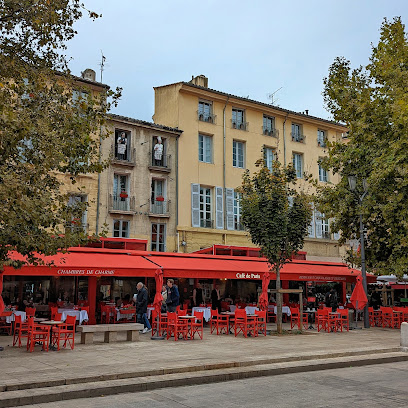
Restaurant Le Mirabeau
Experience exquisite French cuisine at Restaurant Le Mirabeau in Aix-en-Provence, where local flavors meet charming ambiance for an unforgettable meal.

Le Petit Chef
Experience the flavors of Halal cuisine at Le Petit Chef in Aix-en-Provence – where culinary tradition meets modern taste.
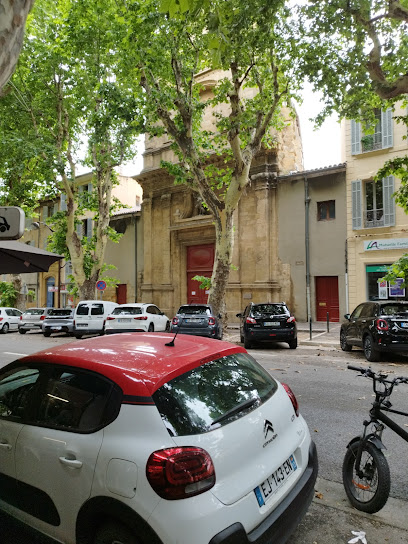
Markets, malls and hidden boutiques
Les Allées
Explore Les Allées, a vibrant shopping haven in Aix-en-Provence, where unique boutiques meet delightful dining experiences.
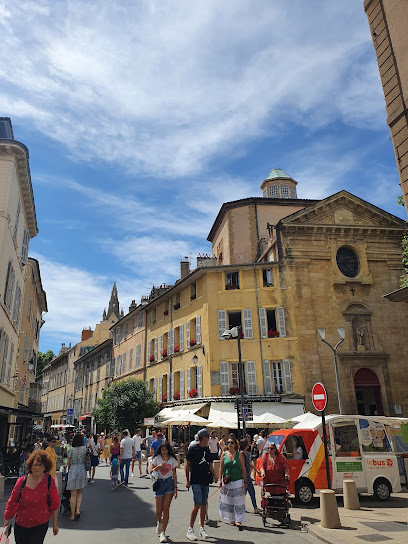
Le Temps des Cerises
Discover the stylish world of Le Temps des Cerises, where fashion meets comfort in the heart of Aix-en-Provence.

Blow Up
Explore unique vintage fashion treasures at Blow Up, the charming clothing store in Aix-en-Provence that showcases a curated selection of retro pieces.
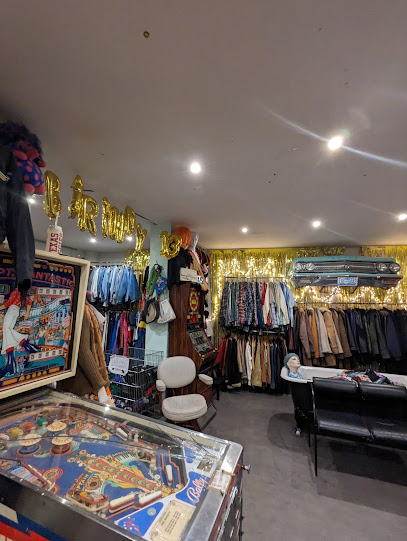
Aix & Co - Maison Onissia
Explore Aix & Co - Maison Onissia for exquisite clothing that reflects the elegance of Aix-en-Provence's fashion scene.

RITUEL DE LUNE
Discover the enchanting world of Rituel de Lune, a premier candle store in Aix-en-Provence, featuring exquisite scents and artisanal craftsmanship.
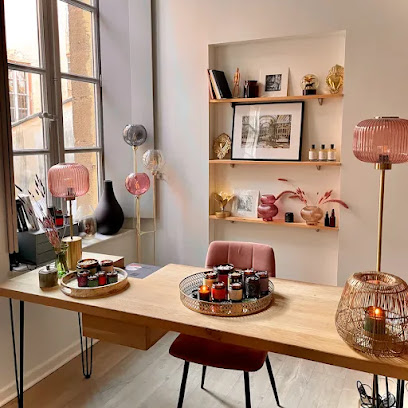
Le showroom...
Explore Le Showroom in Aix-en-Provence - where timeless style meets contemporary fashion for the modern man.
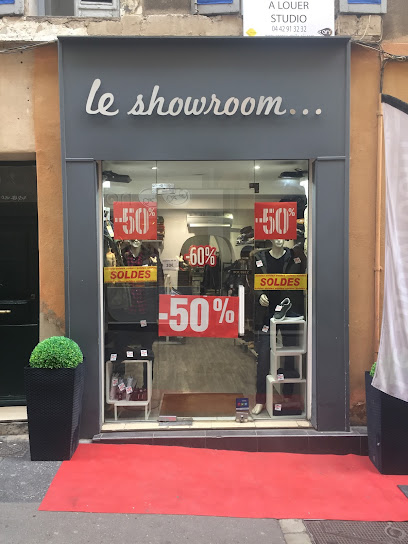
Aix Vintage Store
Discover unique vintage clothing and antique furniture at Aix Vintage Store, the ultimate fashion treasure in Aix-en-Provence.
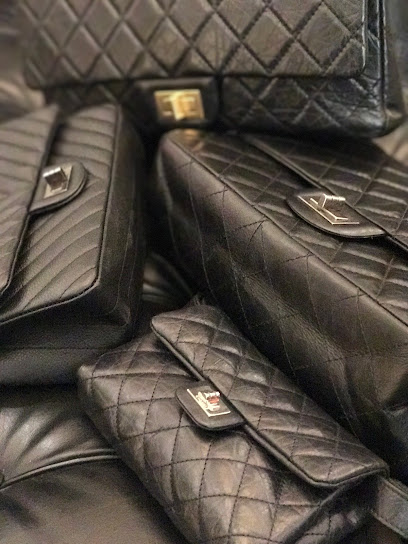
La Fabrique Aixoise
Explore La Fabrique Aixoise in Aix-en-Provence for unique handicrafts and a taste of local artistry, perfect for memorable souvenirs.
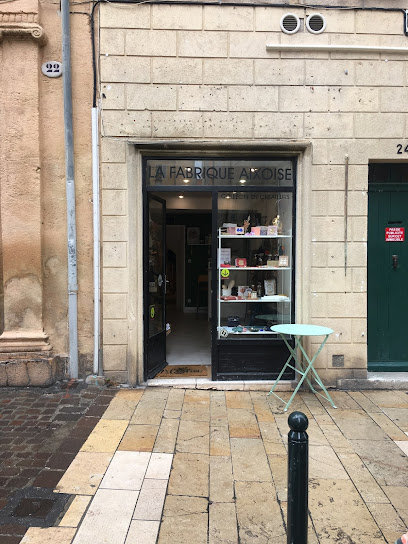
Createurs concept store
Explore the vibrant Createurs concept store in Aix-en-Provence, where local artistry meets unique fashion and decor for an unforgettable shopping experience.
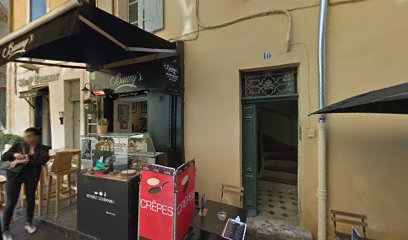
Rétronome Vintage Shop
Explore timeless fashion at Rétronome Vintage Shop in Aix-en-Provence, where every piece tells a story and nostalgia meets style.
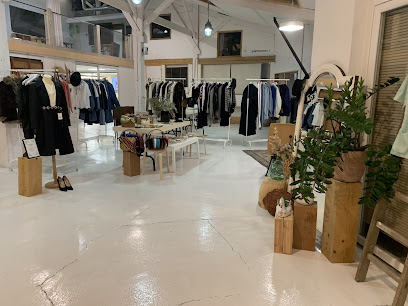
Essential bars & hidden hideouts
Bar Le Grillon
Experience the vibrant flavors of French and Italian cuisine at Bar Le Grillon, a charming bar and restaurant in the heart of Aix-en-Provence.
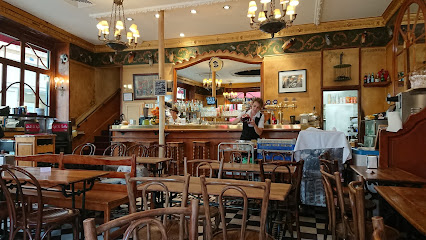
Bar Barracuda
Discover the vibrant nightlife of Aix-en-Provence at Bar Barracuda, a lively bar known for creative cocktails and a welcoming atmosphere.
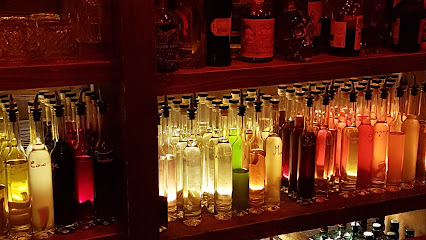
Faubourg 46
Savor the flavors of Aix-en-Provence at Faubourg 46, a delightful restaurant and brewery offering an unforgettable brunch experience.
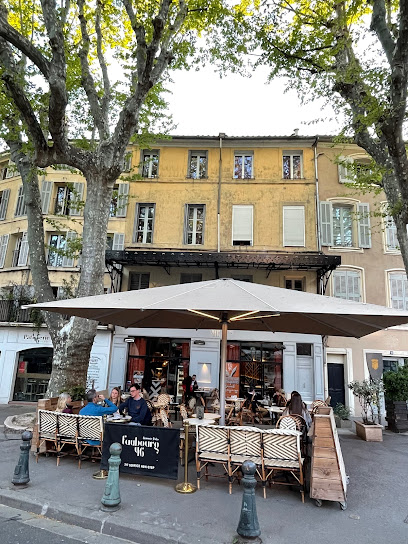
La Belle Epoque
Experience the essence of French cuisine at La Belle Epoque, a vibrant restaurant and brewery in the heart of Aix-en-Provence.
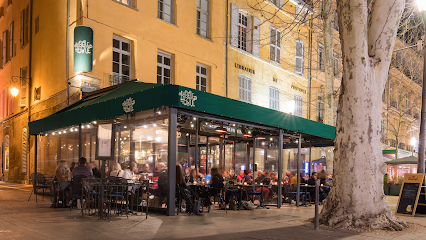
La Cocina Negra
Discover the vibrant nightlife of Aix-en-Provence at La Cocina Negra, where lively music and great drinks await every night.
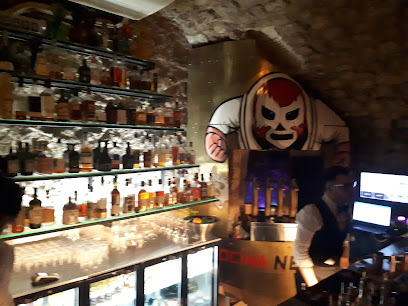
L'Estello
Experience the vibrant flavors of Aix-en-Provence at L'Estello, where Mediterranean cuisine meets a lively atmosphere.
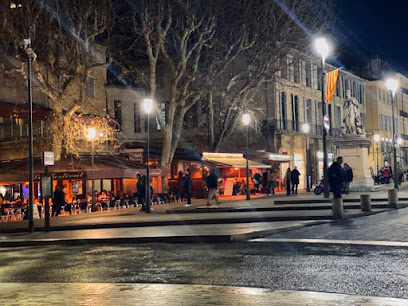
Le Manoir
Discover the vibrant ambiance of Le Manoir in Aix-en-Provence, where delightful drinks and a lively atmosphere await every traveler.
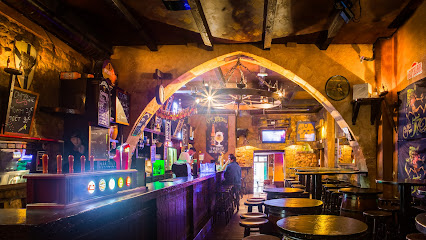
Bar à Bières
Discover the vibrant atmosphere of Bar à Bières in Aix-en-Provence, a craft beer paradise featuring local and international brews.
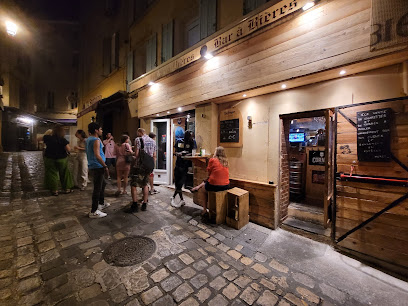
BACK to BAC - Aix-en-Provence
Experience the vibrant cocktail culture at BACK to BAC in Aix-en-Provence, where expertly crafted drinks meet a lively atmosphere.
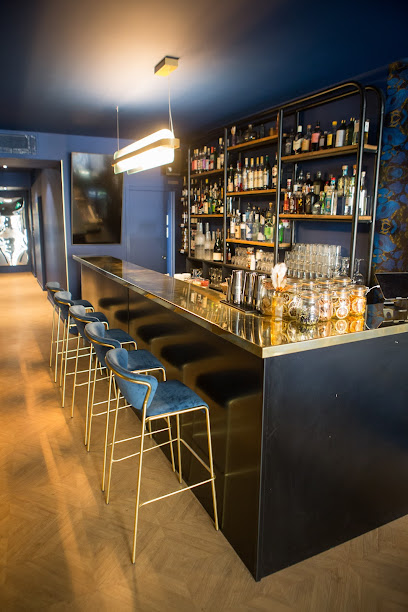
PUB THE KERRY
Discover the vibrant nightlife and local flavors at Pub The Kerry, a lively bar in the heart of Aix-en-Provence, perfect for tourists and locals alike.

Local Phrases
-
- HelloBonjour
[bon-zhoor] - GoodbyeAu revoir
[oh ruh-vwahr] - YesOui
[wee] - NoNon
[noh] - Please/You're welcomeS'il vous plaît
[seel voo pleh] - Thank youMerci
[mehr-see] - Excuse me/SorryExcusez-moi
[ex-koo-zay mwa] - How are you?Comment ça va?
[koh-mohn sah vah] - Fine. And you?Bien. Et vous?
[byen. ay voo] - Do you speak English?Parlez-vous anglais?
[par-lay voo ahn-glay] - I don't understandJe ne comprends pas
[zhuh nuh kohm-prohn pah]
- HelloBonjour
-
- I'd like to see the menu, pleaseJe voudrais voir la carte, s'il vous plaît
[zhuh voo-dray vwahr lah kart, seel voo pleh] - I don't eat meatJe ne mange pas de viande
[zhuh nuh mahnj pah duh vyand] - Cheers!Santé!
[sahn-tay] - I would like to pay, pleaseJe voudrais payer, s'il vous plaît
[zhuh voo-dray pay-ay, seel voo pleh]
- I'd like to see the menu, pleaseJe voudrais voir la carte, s'il vous plaît
-
- Help!Au secours!
[oh suh-koor] - Go away!Allez-vous en!
[ah-lay voo zahn] - Call the Police!Appelez la police!
[ah-peh-lay lah poh-lees] - Call a doctor!Appelez un médecin!
[ah-peh-lay uh may-deh-sahn] - I'm lostJe suis perdu
[zhuh swee pair-doo] - I'm illJe suis malade
[zhuh swee mah-lahd]
- Help!Au secours!
-
- I'd like to buy...Je voudrais acheter...
[zhuh voo-dray zah-shay...] - I'm just lookingJe regarde juste
[zhuh ruh-gard zhust] - How much is it?Combien ça coûte?
[kohn-byen sah koot] - That's too expensiveC'est trop cher
[say troh shair] - Can you lower the price?Pouvez-vous baisser le prix?
[poo-vay voo bay-say luh pree]
- I'd like to buy...Je voudrais acheter...
-
- What time is it?Quelle heure est-il?
[kell er ay-teel] - It's one o'clockIl est une heure
[eel ay ön er] - Half past (10)Dix et demie
[dees ay duh-mee] - MorningMatin
[ma-tan] - AfternoonAprès-midi
[ah-pray mee-dee] - EveningSoir
[swah] - YesterdayHier
[yehr] - TodayAujourd'hui
[oh-zhoor-dwee] - TomorrowDemain
[duh-mahn] - 1Un
[uhn] - 2Deux
[duh] - 3Trois
[twah] - 4Quatre
[kat] - 5Cinq
[sank] - 6Six
[sees] - 7Sept
[set] - 8Huit
[weet] - 9Neuf
[nurf] - 10Dix
[dees]
- What time is it?Quelle heure est-il?
-
- Where's a/the...?Où est...?
[oo ay...] - What's the address?Quelle est l'adresse?
[kell ay lah-dress] - Can you show me (on the map)?Pouvez-vous me montrer (sur la carte)?
[poo-vay voo muh mohn-tray (soor lah kart)] - When's the next (bus)?Quand est le prochain (bus)?
[kahn ay luh proh-shahn (boos)] - A ticket (to ....)Un billet (pour ....)
[uhn bee-yay (poor)]
- Where's a/the...?Où est...?
History of Quartier Sextius-Mirabeau
-
Quartier Sextius-Mirabeau is named after the Roman consul Sextius Calvinus, who founded the ancient city of Aquae Sextiae in 123 BC. The area was known for its natural hot springs and became a significant settlement, attracting visitors for its therapeutic waters. The ruins of Roman baths and aqueducts still bear witness to this period, highlighting the importance of the location in ancient Roman society.
-
In the 17th century, Quartier Sextius-Mirabeau began to evolve into a vibrant cultural hub. The establishment of the Hôtel de Ville and the expansion of the Place de la Rotonde marked the neighborhood as a focal point for civic life. The area became synonymous with the arts, education, and philosophy, fostering a community that celebrated intellectual pursuits, which was characteristic of Aix-en-Provence during the Enlightenment.
-
The 18th century saw a wave of architectural development in Quartier Sextius-Mirabeau, with the construction of elegant townhouses and public buildings that reflected the prosperity of Aix-en-Provence. The influence of neoclassical architecture is evident in the façades and layout of the streets, contributing to the neighborhood's charm and historical significance.
-
During the French Revolution, Aix-en-Provence experienced significant political and social upheaval. Quartier Sextius-Mirabeau was no exception, with changes in governance and the secularization of religious institutions. The Revolution paved the way for new civic ideals, which were reflected in public spaces and the reorganization of community life in the neighborhood.
-
In the 20th century, Quartier Sextius-Mirabeau adapted to modern needs while striving to preserve its historical character. The area has embraced contemporary urban planning, which respects its rich heritage. Efforts to maintain the architectural integrity and promote local culture have made Quartier Sextius-Mirabeau a vibrant area that continues to attract residents and visitors alike.
Quartier Sextius-Mirabeau Essentials
-
Quartier Sextius-Mirabeau is conveniently located in Aix-en-Provence, easily accessible from other neighborhoods. If you're arriving from the train station, you can take a local bus (Line 7) or enjoy a 20-minute walk through the charming streets. For those coming from the city center, a leisurely stroll will take approximately 15 minutes. Taxi services are also readily available, providing quick access to the Quartier.
-
Quartier Sextius-Mirabeau is a pedestrian-friendly area, making it easy to explore on foot. Public transport options include local buses, with several stops throughout the neighborhood. Bicycles can be rented from kiosks in the area, allowing for a scenic ride along the picturesque streets. Additionally, taxis and rideshare services operate within the neighborhood for convenience.
-
Quartier Sextius-Mirabeau is generally a safe area for tourists, but standard precautions should be taken. Avoid poorly lit streets at night and keep personal belongings secure. While there are no specific high-crime areas in the Quartier, it's advisable to be cautious in crowded places, particularly during market days or festivals.
-
In case of an emergency, dial 112 for immediate assistance. The local police station and medical facilities are located within close proximity in Aix-en-Provence. It's highly recommended to have travel insurance that covers medical emergencies. Pharmacies are available for minor health issues, and many have English-speaking staff.
-
Fashion: Do wear comfortable shoes for walking. Casual attire is generally accepted, but avoid beachwear outside of beach areas. Religion: Do respect local customs, especially around churches. Cover your shoulders and knees when visiting religious sites. Public Transport: Do be courteous to fellow passengers. Don’t talk loudly or eat on public transport. Greetings: Do greet with a friendly 'Bonjour' and a smile. Avoid overly casual greetings in formal settings. Eating & Drinking: Do try local specialties at cafés and restaurants. Don’t engage in excessive drinking or loud behavior in public spaces.
-
To experience Quartier Sextius-Mirabeau like a local, start your day at a traditional café for a leisurely breakfast of croissants and café au lait. Visit the local markets for fresh produce and artisanal goods, and engage with vendors for authentic experiences. Explore the quaint side streets to discover hidden gems, such as small boutiques and art galleries. Don't miss the thermal baths, a nod to the area's Roman heritage, for a relaxing experience.
Trending Landmarks in Quartier Sextius-Mirabeau
Nearby Cities to Quartier Sextius-Mirabeau
-
Things To Do in Marseille
-
Things To Do in Avignon
-
Things To Do in Nîmes
-
Things To Do in Saint-Tropez
-
Things To Do in Cannes
-
Things To Do in Montpellier
-
Things To Do in Nice
-
Things To Do in Fontvieille
-
Things To Do in Les Moneghetti
-
Things To Do in Moneghetti
-
Things To Do in La Condamine
-
Things To Do in Monaco-Ville
-
Things To Do in Monte Carlo
-
Things To Do in Larvotto
-
Things To Do in Saint Roman

